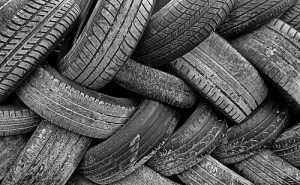 If you decide to get a set of winter tires so you can get better traction on ice and snow, you don’t have to get a set of summer tires to go with it. After all, almost every vehicle out there comes with all-season tires as standard equipment, and even if they aren’t good enough for winter they can still work fine in the summer. So here’s the question: what makes summer tires different, and what makes them better for summer driving than all-season tires?
If you decide to get a set of winter tires so you can get better traction on ice and snow, you don’t have to get a set of summer tires to go with it. After all, almost every vehicle out there comes with all-season tires as standard equipment, and even if they aren’t good enough for winter they can still work fine in the summer. So here’s the question: what makes summer tires different, and what makes them better for summer driving than all-season tires?
The Purpose of Treads
You can drive on perfectly flat, bald tires. In fact, under some conditions they offer better traction than tires with treads. That’s because smooth tires put more rubber on the road than tires with grooves and lines cut into them, and that extra rubber means extra grip.
However, there’s a reason tire treads exist, and it’s because of rain and snow. When the pavement is wet or there’s a puddle in the road, your tires will hit the water before they hit the pavement. If you’re going at around 35 mph, you may start to hydroplane, which means your tires will treat the water like a surface and start to slip. Treads channel the water away from your tires so they can reach the pavement and avoid the danger of hydroplaning.
Summer Treads
All-season tires need to keep winter and the snow and slush that comes with it in mind. Their treads aren’t as thick or as deep as winter tires, but they do have some. Summer tires have treads too, but they aren’t as deep as those of all-season tires. This means they have better grip in dry conditions but worse grip when it’s snowy. However, that’s not all that’s different about summer tires.
Summer Tires for Summer Performance
Not only are summer tire treads smaller, they also use special tread patterns to improve traction. The tires also use a different kind of rubber that’s a little more sticky to give them better traction but tends to wear down faster. Since summer tires don’t worry about snow or ice, their tread patterns are especially good at dealing with rain.
Summer tires really shine when you push your vehicle to its limits. Going at normal speeds and slowing down for curves is easy enough for all-season tires to handle, but summer tires help keep you stable at high speeds and grip the road even on sharp, high-speed corners. High speeds also heat up the surface of your tire, making it even more sticky and improving its grip by that much more.
So to sum everything up, there’s one simple question you need to ask yourself to find out whether you need summer tires or whether all-season tires will work out fine: how far do you push your vehicle in the summer? If you tend to go fast and you enjoy exploring the winding country roads in your area, then summer tires can help keep you safe. But if you don’t demand a strong performance from your vehicle, all-season tires should do fine.
This photo, “Tread carefully !” by Craig Sunter used under CC BY-NC-ND 2.0. “Tread carefully !” is licensed under CC BY-NC-ND 2.0 by Gay Family Kia.


 Warranties include 10-year/100,000-mile powertrain and 5-year/60,000-mile basic. All warranties and roadside assistance are limited. See retailer for warranty details.
Warranties include 10-year/100,000-mile powertrain and 5-year/60,000-mile basic. All warranties and roadside assistance are limited. See retailer for warranty details.